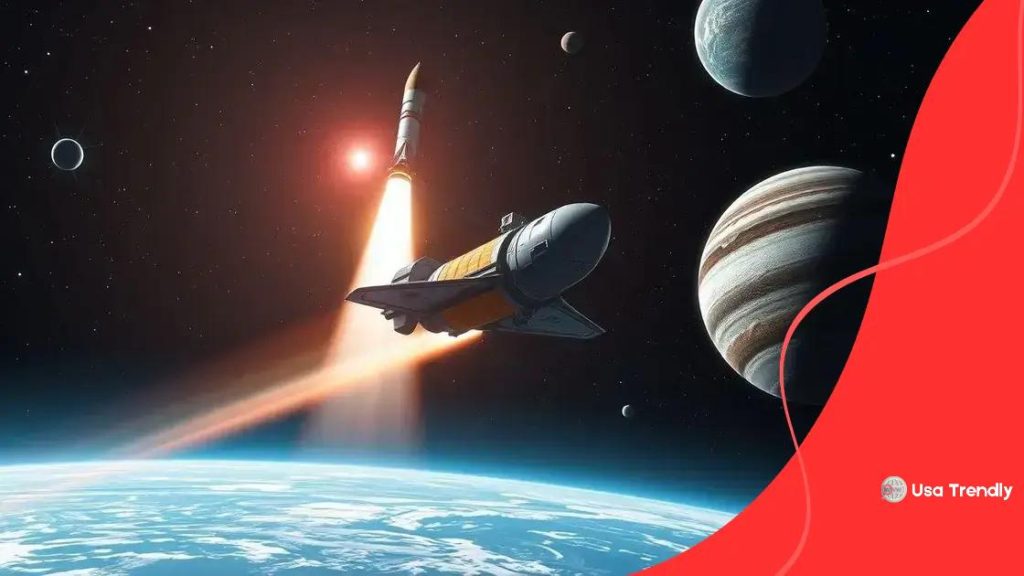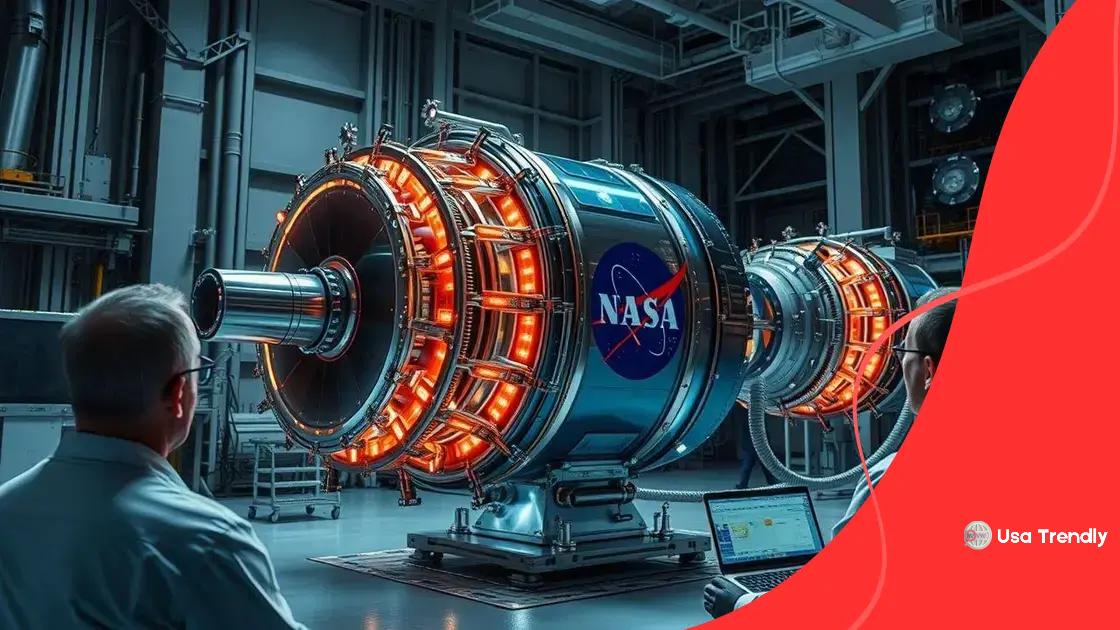NASA announces new space missions for future exploration

NASA announces new space missions aimed at exploring celestial bodies, advancing scientific research, and promoting international collaboration while inspiring future generations in science and technology.
NASA announces new space missions that promise to expand our reach into the cosmos. Have you ever wondered what secrets lie beyond our planet? Let’s dive into what these missions entail.
Overview of NASA’s upcoming missions
NASA’s upcoming missions are set to take us beyond our current horizons. These missions are exciting ventures that aim to deepen our understanding of the universe and explore uncharted territories.
What to Expect from the Upcoming Missions
Among the key aspects is the focus on both robotic and crewed missions. These will include landings on different celestial bodies and the pursuit of knowledge about our solar system. You may wonder how this influences our everyday lives. The advancements from these explorations often lead to technology that benefits us back on Earth.
Key Objectives of NASA’s Missions
The goals of these missions encompass several important scientific inquiries:
- Investigating the atmospheres of distant planets.
- Studying asteroids and their potential resources.
- Understanding Mars‘ geology and climate.
In addition to scientific knowledge, there’s a profound interest in technology development. Technologies developed for space exploration often find applications in our daily lives, enhancing sectors like medicine, environmental monitoring, and telecommunications.
The Importance of International Collaboration
NASA is not alone in its endeavors. Collaborations with international space agencies enhance the scope and impact of each mission. These partnerships ensure a pooling of resources, objectives, and knowledge leading to richer discoveries.
As these exciting ventures unfold, the impact on science and technology grows. With every launch, there’s new potential to unravel mysteries of the universe, fueling inspiration and aspiration among people around the globe.
Key objectives of the new missions
The key objectives of NASA’s new missions focus on exploring the vastness of space and answering some of humanity’s most pressing questions. Each mission is carefully designed to gather essential data from diverse cosmic environments.
Exploration of Celestial Bodies
One major goal is the exploration of celestial bodies. This includes studying planets, moons, and asteroids, each providing unique insights into the origins of the solar system. Understanding these bodies helps us learn about the formation of Earth and other planets.
Search for Life
Another vital objective is the search for extraterrestrial life. NASA aims to identify signs of life, whether past or present, on planets like Mars and moons such as Europa. These missions pave the way for future exploration and potential colonization.
- Investigating the habitability of Mars.
- Studying the icy surface of Europa for signs of water.
- Examining the composition of asteroids for organic material.
In addition to searching for life, NASA aims to understand how planets evolve. This includes examining their atmospheres, climates, and geological features. These insights can inform our understanding of climate change here on Earth.
Technological Advancements
Each mission also has a focus on developing new technologies. NASA is investing in advancements that enhance safety and efficiency in space travel. For instance, innovations in propulsion systems and life support can transform how we explore space.
With these key objectives, NASA’s new missions promise to deepen our understanding of the universe while inspiring future generations of scientists and explorers.
Technological advancements supporting space travel

Technological advancements are crucial for the success of NASA’s new space missions. These innovations not only enhance efficiency but also improve the safety of astronauts and spacecraft. The developments in technology help pave the way for deeper explorations into space.
Improved Propulsion Systems
One major area of focus is the development of advanced propulsion systems. These systems aim to reduce travel time to distant planets. Some new technologies include ion propulsion and solar sails, which can propel spacecraft using less fuel.
Enhanced Life Support Systems
Another critical advancement is in life support systems. These systems ensure that astronauts have the necessary air, water, and food during long missions. Innovations like water reclamation systems recycle moisture from the air, making it possible to use less water overall.
- Integration of hydroponics for growing food in space.
- Installation of advanced filtration systems for clean drinking water.
- Development of compact oxygen generators.
Moreover, the integration of automation and artificial intelligence plays a vital role in reducing human error. AI can assist in navigation, system monitoring, and even conducting experiments remotely, making missions more efficient and safer.
Robotic Assistance
Robotic technologies are also becoming more advanced, providing essential support for astronauts in space. Robots can assist in repairs, conduct experiments, and even gather samples on the surface of other planets, reducing the risk to human lives.
These technological advancements create a strong foundation for future exploration. By investing in innovative technologies, NASA is preparing to tackle the challenges that come with venturing into the unknown.
How these missions will impact scientific research
The upcoming NASA missions promise to significantly impact the field of scientific research. These missions aim to not only answer questions about our solar system but also to shape the future of science and technology.
Expanding Knowledge of the Universe
These missions will provide new insights into planetary science. By exploring celestial bodies like Mars and asteroids, scientists hope to uncover the history of our solar system. This knowledge helps us understand how planets evolve and may even inform us about the origins of life.
Interdisciplinary Collaboration
Furthermore, NASA’s missions foster interdisciplinary collaboration. Researchers from various fields work together to tackle complex questions. For example, under the study of astrobiology, scientists use insights from geology, biology, and chemistry. This collaboration enhances our understanding and creates opportunities for innovation.
- Development of new materials designed for extreme environments.
- Advancements in robotics and AI for data collection.
- Cross-disciplinary approaches that integrate diverse scientific perspectives.
Each mission generates data that can be analyzed for years to come. The information collected enables researchers to build on previous work and make new discoveries. Enhanced data-sharing platforms ensure these findings are accessible, driving further research and exploration.
Technological Innovation
Additionally, NASA missions lead to numerous technological innovations. Innovations made for space applications often find uses on Earth. For instance, advancements in healthcare technology and environmental monitoring stem from space research. These missions inspire new technologies that can be applied to everyday problems.
The profound impact of these missions extends beyond space. They push the boundaries of what we know and drive progress across various scientific fields. As NASA explores the cosmos, the insights gained will shape our understanding of life and the universe.
Public engagement and international collaborations
Public engagement and international collaborations are essential components of NASA’s new space missions. These efforts help broaden the impact of scientific exploration and foster a global interest in space science.
Inspiring the Next Generation
NASA’s outreach programs aim to inspire young people to pursue careers in science, technology, engineering, and mathematics (STEM). Through educational initiatives, students gain hands-on experiences and learn more about the exciting world of space exploration. Programs like student satellite launches and interactive workshops make science engaging and accessible.
Building Global Partnerships
Collaboration with international space agencies enhances mission capabilities. NASA works closely with organizations like the European Space Agency (ESA) and the Indian Space Research Organisation (ISRO). These collaborations boost resources and expertise, allowing for more ambitious projects.
- Sharing data and research findings to advance knowledge.
- Joint missions that combine different technologies and approaches.
- Co-hosting conferences and workshops to share ideas.
The cooperative spirit of global partnerships strengthens the scientific community. When countries unite their efforts, they can tackle complex challenges, making discoveries that benefit everyone. International collaborations also promote peace and understanding through joint scientific endeavors.
Engaging the Public
Navigating space is not just for scientists; it’s for everyone. NASA actively engages the public through social media, live-streamed launches, and educational events. By inviting the public to join in on the excitement, NASA fosters a sense of community and shared purpose.
Public interest often drives investment in space programs. When people are enthusiastic about discoveries, funding and support typically follow. This engagement ensures that space exploration remains a priority for future generations, helping to fuel the drive to explore beyond our planet.
FAQ – Frequently Asked Questions about NASA’s New Space Missions
How do NASA’s missions inspire the next generation?
NASA’s outreach programs engage students through hands-on activities and educational resources, encouraging them to pursue careers in STEM fields.
What role do international collaborations play in NASA’s missions?
International collaborations allow NASA to pool resources, share expertise, and tackle complex challenges, leading to more successful missions.
How do technological advancements from space missions benefit life on Earth?
Many technologies developed for space exploration, such as improvements in healthcare and environmental monitoring, find valuable applications here on Earth.
Why is public engagement important for NASA?
Public engagement fosters a sense of community and support for space exploration, driving interest and potential funding for future missions.
SEE MORE CONTENT